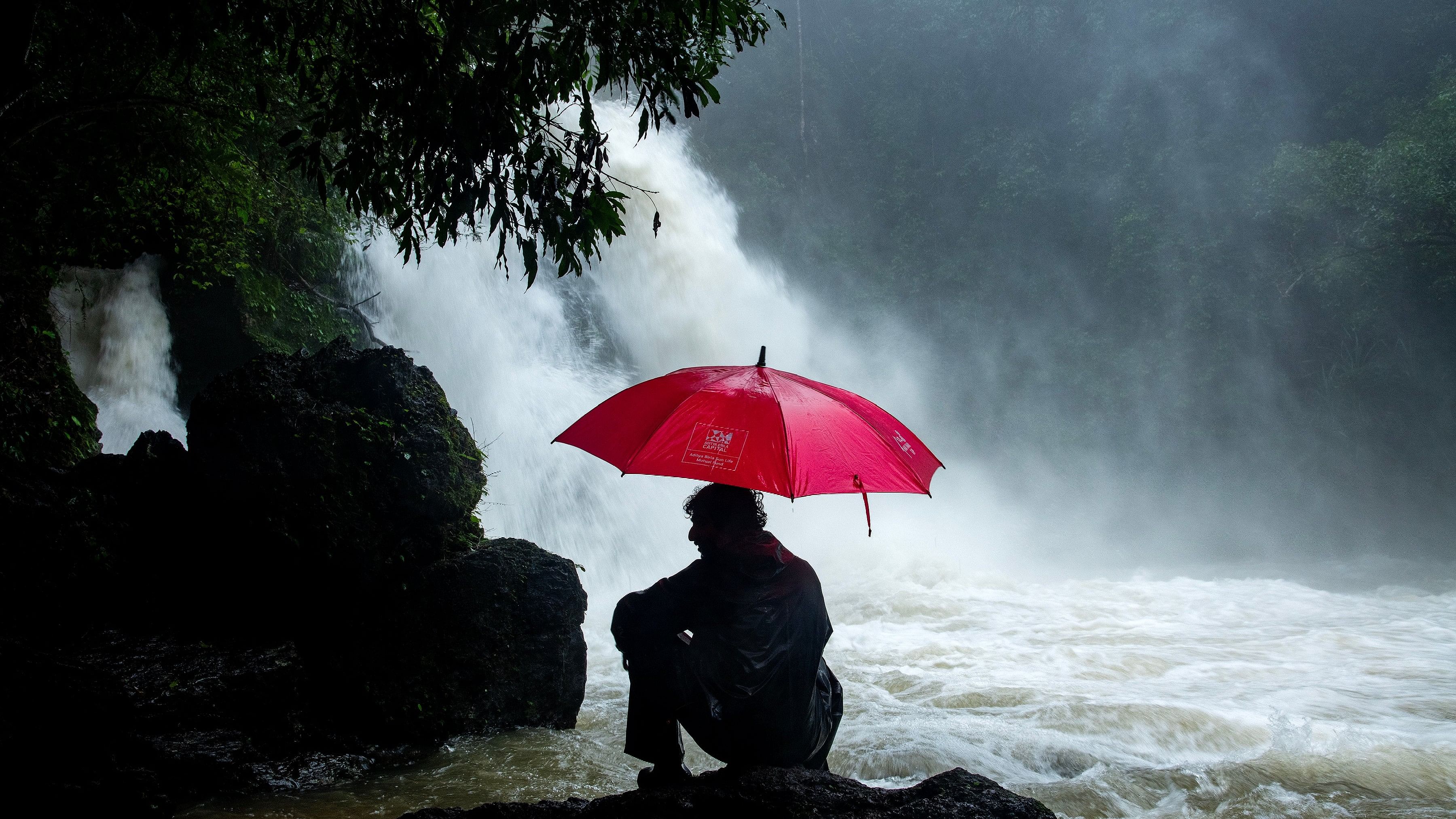
A man at Jogi Gundi Falls during the rains shot by H Satish on a Nikon D850, with an ISO of 640, a shutter speed of 1/50th of a second, and an aperture of f9.
Credit: Special arrangement
Photography is a creative yet challenging pursuit. Shooting in the rain is particularly daunting. Experts share how photography enthusiasts can compose a perfect rain shot using their DSLR or mobile phone.
Kalyan Varma is an Emmy-nominated wildlife filmmaker and photographer. As part of a docu-series for BBC in 2012, he worked outdoors during the monsoon for an extended period. His first advice to beginners: It is okay if your pictures are not perfect or if your lens gets misty.
Look for a story
Naveen Iyer, member of Photowalk Bengaluru, believes a good monsoon picture should capture the “essence of the season while depicting a story”. Street scenes, raindrops on leaves, flowers, reflections, children playing in rain, and people holding umbrellas are among his favourite rain shots.
Storytelling is key, says H Satish, a senior member of the Youth Photography Society. “Photos of people holding up their clothes to avoid the water on the ground or vehicles stuck in a water-logged area point to bad roads,” he says. He likes photographing people, waterfalls, and wildlife during the rains.
Bengaluru-based photographer Shruthi Raghunanda says monsoon photography is a lot more than shooting a downpour. Reflections in a puddle depict the season just as well.
She likes focusing on water droplets on car windows. Such shots can be clicked using a 50 mm prime lens. She likes low-angle shots of rain-soaked streets, and also skies in different hues.
Varma clicks photographs of light rain, thunderstorms, waterfalls, how wildlife reacts to monsoons, and how people and their livelihoods change during the season.
Know the techniques
The trailing effect is popular in monsoon photography. “When the image of a moving object like flowing water or a raindrop is captured with a slower shutter speed, it creates a trail or streaking effect,” Varma explains.
It is important to get a clear understanding of the exposure triangle — ISO, shutter speed, and aperture.
Satish says, “For elongated water drops, shutter speed must be 1/15th or 1/30th of a second while for slightly smaller droplets, 1/60th or 1/80th of a second work. To see clear droplets, change the shutter speed to 1/250th or 1/500th of a second.”
Shruthi says the bokeh effect (a soft out-of-focus background effect) can get you shots with the rain aesthetic.
It is ideal to shoot raw images (unprocessed images) and not in the JPEG format. There is minimal control over processing the photos in the latter, explains Satish.
Since the mood is usually gloomy, try to capture a scene with bright, contrasting colours, says Shruthi.
Tips for mobile photographers
Varun Vivek is a Hyderabad-based fashion and celebrity photographer. He calls attention to the position of the lens on mobile phones — it is often on the left or right and not in the centre. A good understanding of the phone lens is a basic requirement. Reflections of monuments and nature are some of his favourite rain shots. Damp walls and surfaces often have amplified colours and emote differently, adds Vivek.
Challenges of monsoon photography
Iyer says low-light conditions, moving subjects, and slippery surfaces that are not ideal for setting up the gear are common concerns. “Since raindrops on the lens can affect the autofocus setting, one also needs to focus manually,” he says.
Wildlife photographers like Varma say it is harder to spot animals and insects during the rains as they tend to take cover under lush greenery.
Not to forget, there is a greater risk of water damaging the hardware part of the camera.
“Most cameras that have been made a decade or two decades earlier are waterproof. It is still important to keep your camera dry to avoid fungal growth,” he adds. Satish suggests using a camera raincoat to shield the shooting gear.